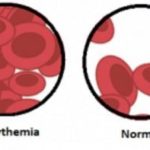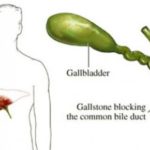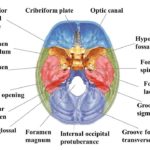Patent Foramen Ovale (PFO)
Definition
Patent foramen ovale (Foramen ovale apertum, lat) is a malformation of the heart and a presence of an opening between two atriums, left and right, which allows the blood to flow from left atrium as the point of higher pressure to right atrium. Normally, foramen ovale closes after the birth and is only useful in creating the fetal circulation, which bypasses the lungs.
The lungs are normally filled with fluid, and normally only a small amount of blood reaches them in order to supply them with nutrition. After birth, usually after a couple of weeks or a few months, with some known mechanisms, the foramen slowly closes and prevents the blood from mixing. The blood can then normally pass from right atrium to right ventricle and to the pulmonal trunc and lungs.
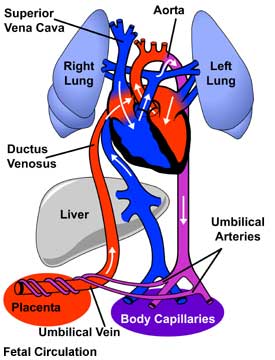
Figure 1 Fetal circulation (1)
Patent Foramen Ovale Causes
It is estimated that between 10 and 15% of population has PFO, but it is more likely that the PFO will be found in quarter of all human population, based on some cadaveric studies. (1) There are no known risks factors that could predict and prevent the occurrence of the PFO.
The substances that are responsible for keeping the foramen opened are called prostaglandins, and they are increased during fetal growth and pregnancy. After birth they begin to slowly decrease, facilitating the closure. Another factor is the air that enters the lungs the minute baby is born.
With difference in pressures between lungs and arterioles of the lungs and the right side of the heart, the ‘’gates’’ that surround the foramen ovale are pushed allowing the closure. Any difficulty in one of these two factors may contribute to Patent foramne ovale. Presumably, some genetic factors play a role.
Risks and complications
- Stroke and transitory ischaemic event – blod clot that is formed in veins may quickly pass through th eforamne into the left ventricle and into the aorta and organs (brain, kidneys, lungs), which could block the blood circulation and nutrition.
- Heart attack – with the sam mechanism the coronary arteries may be blocked with the clot
- Migraines and unexplained headaches may cause trouble to some people until the real cause is found and treated: the PFO. Scientists aren’t sure with which mechanism do these migraines occur, but it is somehow linked to the circulation problems and clot forming.

Figure 2 The direction in which the blood may flow in some circumstances, and may or may not bring blood clots in it to the systemic circulation (3)
Patent Foramen Ovale Symptoms
The blood passes from left atrium to right only from time to time, causing insignificant symptoms. This happens when a person increases the pressure in the left side of the heart by sneezing, straining or cougning. (1) In most cases, the PFO remains unsymptomatic and requires no treatment. Children who have symptoms, usually have another heart defect that interrupts with the normal oxygenation of blood.
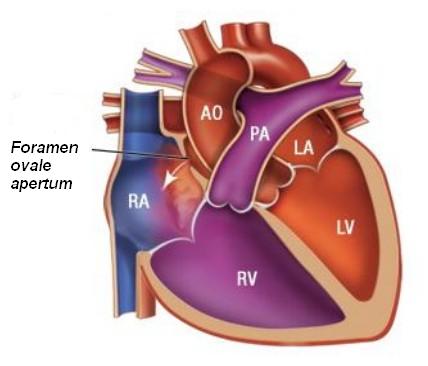
Figure 3 The course of blood in the Patent formane ovale. (1)
The danger appears if a blood clot develops, and it can possibly enter the systemic circulation and cause a stroke, or a transitory ischaemic event. Some people may have unexplained migraines that are later explained with the presence of patent foramen ovale.
Extremely rarely, a significant amount of blood may bypass the lungs and cause cyanosis and hypoxia. Scuba divers may experience some difficulties if they have PFO. This is known as the neurologic decompression sickness. Other symptoms are: embolism of different organs with clots, or heart attack, valve disease or sleep apnea. (3)
Diagnosis
This condition is usually recognised by accident or in people who have had some symptoms. They have a normal electrocardiogram and laboratory test appear normal. For a proper diagnosis it is recommended to use color flow Doppler, a type of ultrasound imaging where the precise flow of blood can be noticed and measured.
Other techniques are contrast echocardiography, 2 or 3 dimensional transesophageal echocardiography and transcranial Doppler. There is a visible turbulence in the blood stream and a small amount of blood passes through the hole which is also visible via 2 or 3 dimensional ultrasound.
Contrast echocardiography uses saline bubbles as contrast and includes following the volume of the saline with bubbles from the veins of the arm to the heart and where it will go: to the right ventricle and lungs or directly to the left atrium, which proves the diagnosis of PFO. (4)
Treatment
Since many people don’t have any symptoms, they have no diagnosis and require no treatment. Even those with mild symptoms don’t require treatment or may use Aspirin or Warfarin to prevent them from forming the potentially dangerous blood clots.
Surgical procedure is the only one that secures that the foramen is closed and it can be performed with catheterization through the femoral artery in the leg or with open heart surgery. (4) There is also a possibility to implant the device that would gradually close the foramen.
Indications for surgery include the opening that is more than 25mm, problems with the percutaneous device or the tissue around the PFO that is scaring, or to prevent the clots from causing repeated embolism. The treatment is effective in 95% of cases.
Works Cited
- Patent formane ovale. Cave point Foundation. [Online] 1 24, 2017. [Cited: 2 23, 2017.] http://www.pted.org/?id=pfo2.
- Incidence and size of patent foramen ovale during the first 10 decades of life: an autopsy study of 965 normal hearts. Hagen PT, Scholz DG, Edwards WD. 1984, Mayo Clin Proc. 59(1), pp. 17-20.
- Patent Foramen Ovale (PFO). Private hospital heart centre Varde. [Online] [Cited: 2 23, 2017.] http://phvarde.com/en/examinations-and-treatments/cardiological-treatments/patent-foramen-ovale-pfo/.
- Patent Foramen Ovale (PFO). ClevelandClinic.org. [Online] [Cited: 2 23, 2017.] http://my.clevelandclinic.org/health/articles/patent-foramen-ovale.
- Vitium cordis. [Online] [Cited: 2 23, 2017.] http://patologijapatologija.blogspot.rs/p/vitium-cordis.html.
- SN., Shah. Patent Foramen Ovale Clinical Presentation. MedScape. [Online] 11 20, 2016. [Cited: 2 23, 2017.] http://emedicine.medscape.com/article/156863-clinical.
- Patent Foramen Ovale. Texas Heart Institute. [Online] 8 2016. [Cited: 2 23, 2017.] http://www.texasheart.org/HIC/Topics/Cond/pfo.cfm.
- Patent Foramen Ovale (PFO). American Heart Association. [Online] 10 20, 2015. [Cited: 2 23, 2017.] http://www.heart.org/HEARTORG/Conditions/More/CardiovascularConditionsofChildhood/Patent-Foramen-Ovale-PFO_UCM_469590_Article.jsp#.WK7H_9Lyvcs.

